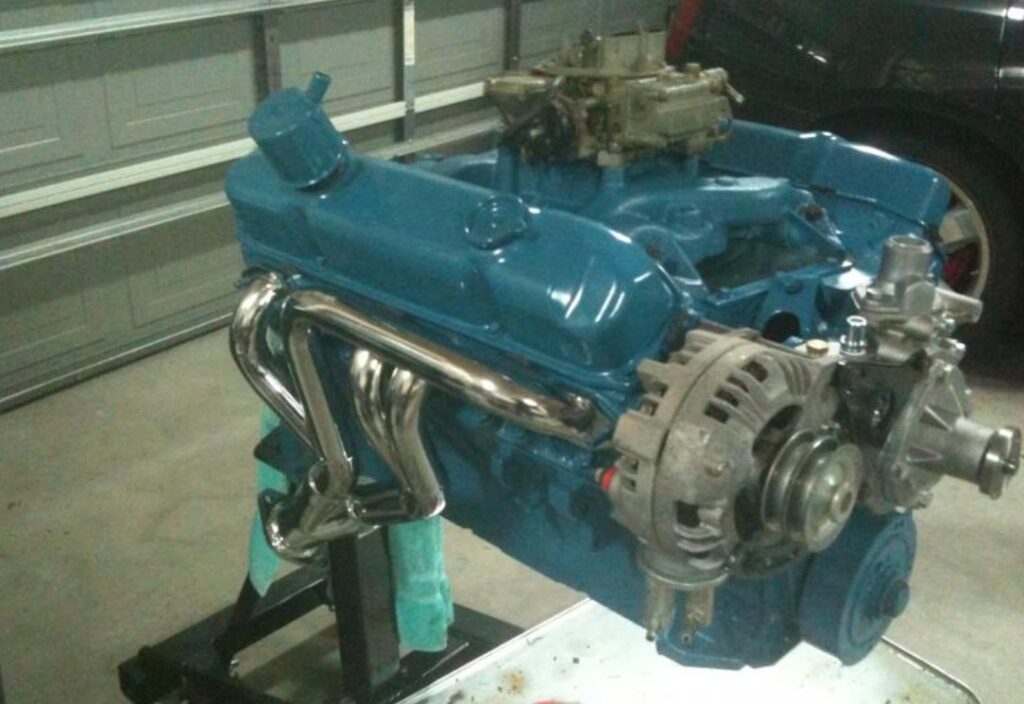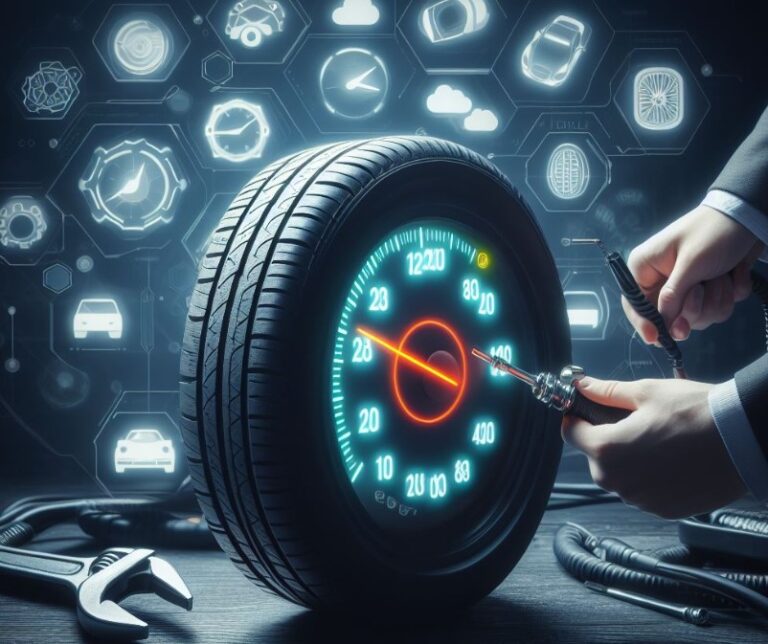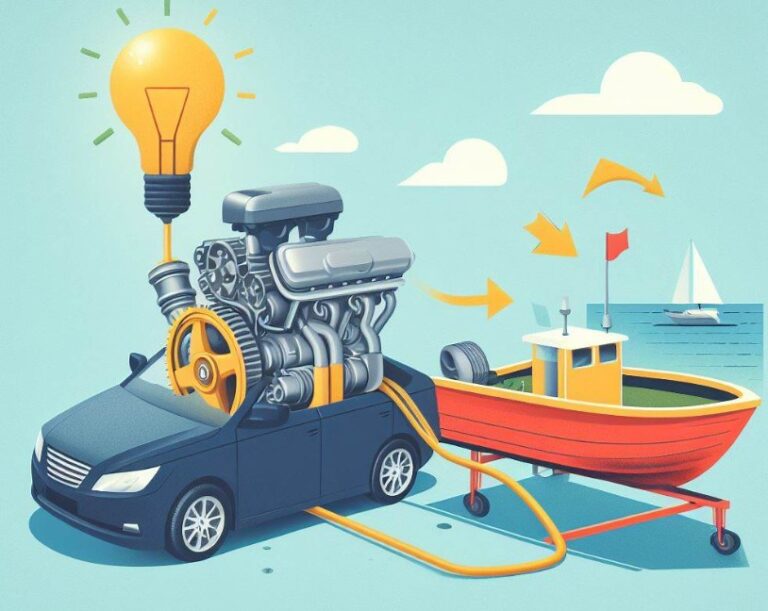How To Identify A 413 Engine? Identify In 8 Steps
Are you looking for How To Identify A 413 Engine? Identifying a 413 engine can be a fascinating journey for automotive enthusiasts. This iconic engine, known for its power and durability, has a unique place in automotive history. In the first few lines, we delve into the characteristics and identifiers that make the 413 engine stand out. This guide aims to provide clear, comprehensive information for those looking to authenticate or learn more about this classic powertrain.
Key Takeaways
- Understanding Engine Numbers: Identifying the 413 engine starts with engine number location and decoding.
- Visual Inspection Tips: Recognize the 413 engine through specific visual components.
- Historical Context: Understanding the era and models that utilized the 413 engine.
- Performance Specifications: Key performance features that distinguish the 413 engine.
- Maintenance and Upkeep: Recognize signs of originality and modifications.
How To Identify A 413 Engine?
Identifying a 413 engine, a classic big-block V8 produced by Chrysler in the 1960s, involves several detailed steps. These steps help authenticate the engine, whether for restoration projects, purchasing decisions, or historical interest. Here’s a breakdown:

1. Engine Number Identification
- Locating the Engine Number: The engine number is typically stamped on the engine block. On the 413 engine, it’s often located near the front of the block or on a machined pad near the distributor.
- Decoding the Engine Number: This number includes information about the manufacturing plant, date of production, and engine type. Decoding this number, often through manufacturer’s manuals or online resources, can confirm if it’s a 413 engine.
2. Visual Inspection
- Identifying Physical Characteristics: The 413 engine has distinct physical features like the size and shape of the engine block, the design of the intake manifold, and the positioning of the components.
- Checking for Unique Markings: Look for specific casting numbers and markings that are unique to the 413 engine. These are usually found on various parts of the engine like the heads, intake manifold, and block.
3. Historical and Model Verification
- Vehicle Model Check: Since the 413 engine was used in specific Chrysler, Dodge, and Plymouth models, verifying the vehicle model can provide clues about the engine.
- Cross-Referencing Historical Data: Compare the engine’s characteristics with historical data from the era when the 413 was predominantly used (mainly in the early to mid-1960s).
4. Performance Specifications Analysis
- Understanding Power and Torque Ratings: The 413 engine is known for its specific power and torque outputs. Familiarize yourself with these specifications and see if they match the engine in question.
- Comparing with Other Engines: Sometimes, comparing the engine’s characteristics with those of similar engines (like the 383 or 440) can help confirm its identity.
5. Checking Internal Components
- Inspecting Internals: If possible, inspect internal components like the pistons, crankshaft, and camshaft, which have specific designs in the 413 engine.
- Look for Modifications: Be aware of common modifications that can either confirm the engine as a 413 or suggest it has been altered.
6. Consulting Experts
- Seeking Professional Advice: If there’s still uncertainty, consulting with a classic car expert or a mechanic who specializes in vintage engines can provide additional insights.
7. Use of Technology and Resources
- Leveraging Online Forums and Databases: Online resources, forums, and databases can be invaluable for gathering information and comparing engine specifics.
- Reference Books and Manuals: Utilizing engine identification guides, Chrysler’s production manuals, and automotive history books can offer detailed information.
Following these steps thoroughly increases the chances of accurately identifying a 413 engine. It’s a process that blends technical inspection with historical research, offering a fascinating glimpse into automotive history.
Identifying Engine Numbers

Locating and Decoding
The first step in identifying a 413 engine is understanding where to find the engine number and how to decode it. The engine number, usually found on the engine block, provides vital information about the engine’s origin and specifications.
Research and Verification
Cross-referencing the engine number with manufacturer records can confirm the authenticity of a 413 engine. This process might involve consulting vintage car experts or utilizing online databases.
Visual Inspection Tips
Recognizing Unique Components
The 413 engine has distinctive components that set it apart visually. These include the shape of the engine block, the configuration of the intake manifold, and specific casting numbers.
Signs of Authenticity
Authentic 413 engines have unique markings and wear patterns. Understanding these nuances can help in distinguishing an original engine from a replica or a modified version.
Historical Context
Era and Usage
The 413 engine was predominantly used in the 1960s, powering various models across different manufacturers. Understanding the historical context helps in identifying vehicles that originally came with this engine.
Model-Specific Features
Certain car models had unique adaptations of the 413 engine. Recognizing these model-specific features can aid in engine identification.
Performance Specifications

Power and Torque
The 413 engine is renowned for its impressive power and torque output. These performance characteristics are key indicators of the engine’s identity.
Comparison with Other Engines
Comparing the 413 engine’s performance with other engines from the same era can provide clarity on its identification.
Maintenance and Upkeep
Recognizing Original Parts
Identifying original parts and components is crucial in authenticating a 413 engine. These include original carburetors, distributors, and exhaust systems.
Signs of Modifications
Modifications can alter the original characteristics of the 413 engine. Being aware of common modifications helps in identifying engines that have been altered.
Advanced Identification Techniques

Analyzing Engine Internals
Deepening our understanding of the 413 engine requires a look inside. The internal components, such as the piston size, crankshaft design, and camshaft specifications, are crucial. These elements are unique to the 413 engine, reflecting its design philosophy and era-specific technology.
Cross-Reference with Historical Data
Another layer of identification involves cross-referencing engine specifics with historical manufacturing data. This process includes understanding the production changes over the years, which can pinpoint the exact year and model of a 413 engine. Vintage automotive databases and manufacturer archives are invaluable resources for this research.
Performance Analysis
Dyno Testing
To further authenticate a 413 engine, dyno testing can be insightful. This involves measuring the engine’s horsepower and torque output under controlled conditions. Comparing these results with the known specifications of a 413 engine can confirm its authenticity or indicate modifications.
Understanding Performance Upgrades
The 413 engine has been a popular choice for performance upgrades. Recognizing these modifications, from upgraded carburetors to enhanced exhaust systems, helps in identifying engines that have been tweaked for better performance. Knowledge of common upgrades and their impact on the engine’s performance is crucial.
Historical Significance and Legacy
The 413 in Motorsport
The impact of the 413 engine in motorsports is a testament to its capabilities. Its use in racing, particularly in drag racing and stock car racing during its heyday, marks an important chapter in its history. Understanding this aspect helps in appreciating the engine’s design and performance characteristics.
The Legacy in Automotive Culture
The 413 engine holds a special place in automotive culture. Its influence on car design, engine technology, and even pop culture is profound. Exploring this legacy provides a broader perspective on why identifying a 413 engine is more than just a technical exercise; it’s a dive into automotive history.
Common Pitfalls in Identification

Mistaking Similar Engines
One common challenge in identifying a 413 engine is mistaking it for similar engines, like the 383 or 440. Knowing the subtle differences in size, component layout, and performance specifications is key to avoiding this mistake.
Overlooking Wear and Tear
Engines that have been in use for decades show signs of wear and tear. This can sometimes alter their appearance and performance, leading to misidentification. A thorough inspection and understanding of how aging affects these engines are essential for accurate identification.
Tips for Preservation and Restoration
Maintaining Authenticity
For those looking to preserve or restore a 413 engine, maintaining its authenticity is crucial. This involves using original or period-correct parts and following traditional maintenance practices.
Best Practices in Restoration
Restoring a 413 engine requires a balance between preserving its originality and ensuring its functionality. Understanding the best practices in engine restoration, from sourcing parts to applying modern preservation techniques, is key to a successful restoration project.
What Engine Is A 413?
The 413 engine is a part of Chrysler’s RB (Raised Block) series, a range of big-block V8 engines. Introduced in the late 1950s and extensively used in the 1960s, the 413 engine became famous for its robust design and high performance.

It typically featured a displacement of 413 cubic inches (6.8 liters) and was utilized in various Chrysler, Dodge, and Plymouth models.
This engine stood out for its impressive power and torque, making it a popular choice for luxury cars, muscle cars, and even commercial vehicles.
The 413 was especially noted for its “Max Wedge” version, a high-performance variant that found success in racing.
As part of its design, it often featured a four-barrel carburetor setup and had distinctive engine block and head designs, which helped in its identification and performance optimization.
How Do I Identify A Mopar Engine?
Identifying a Mopar engine, which encompasses engines made by Chrysler, Dodge, Plymouth, and related brands, involves several steps:
- Engine Number Identification: The engine number, typically found on the engine block, provides crucial information. It includes details like the date of manufacture and the engine model. Decoding this number can reveal the engine type and its originality.
- Visual Inspection: Mopar engines have distinct features, such as the shape of the engine block, the design of the cylinder heads, and specific casting numbers. These visual cues can help in identifying the engine model.
- Reference to Manufacturing Data: Cross-referencing the engine number and visual characteristics with manufacturing data helps confirm the engine’s identity. This data can be found in Mopar engine manuals, historical documents, or authenticated online databases.
- Checking for Modifications: Understanding common modifications made to Mopar engines can also aid in identification. Non-original components or alterations can provide clues about the engine’s history and usage.
- Consulting Experts: In cases where identification is challenging, consulting with classic car experts or mechanics specializing in Mopar engines can provide additional insights and confirmation.
By following these steps, one can accurately identify Mopar engines, and understand their specifications, and historical significance.
What Car Had A 413?
The 413 cubic inch V8 engine was a prominent feature in several Chrysler Corporation models, particularly during the 1960s.
Notable among these were luxury models like the Chrysler 300 series, including the 300G and later versions, which became synonymous with high performance and sophisticated engineering.

The engine also found its way into the Dodge Polara and Dodge 880, enhancing their reputation for power and reliability. The Plymouth Fury is another classic example, where the 413 engine was used to provide a blend of luxury and performance.
These vehicles not only showcased the engine’s capability but also marked an era of American automotive history where power and prestige were key selling points.
The 413 engine, particularly in its “Max Wedge” form, was also a popular choice in the muscle car scene, known for its high performance in drag racing.
How Do You Tell What Year Your Engine Block Is?
Determining the year of an engine block involves a few key steps:

- Locate the Casting Number: The casting number on an engine block is a primary identifier. It is usually found on the side of the block or near the bell housing area. This number is a code that can be decoded to reveal the year of manufacture.
- Decode the Casting Number: Various resources, such as manufacturer’s guides, automotive history books, or reliable online databases, can be used to decode this number. Each manufacturer has a unique coding system that includes information on the year the block was cast.
- Examine the Date Code: In addition to the casting number, many engine blocks have a specific date code that indicates the exact date of manufacture. This code is often found in a different location than the casting number and can be very detailed, showing the month, day, and year.
- Consult Manufacturer’s Records: For more precise information, consulting the manufacturer’s records, if available, can provide the exact year of production. This might require reaching out to brand-specific clubs or organizations that maintain historical data.
- Professional Verification: If uncertainty remains, professional verification from a mechanic or an expert in classic cars can be sought. They have the expertise and resources to accurately determine the year of an engine block.
These steps will aid in accurately determining the year of an engine block, an essential aspect of restoration, valuation, and historical research.
Conclusion
Identifying a 413 engine involves a blend of technical knowledge, historical understanding, and keen observation. From decoding engine numbers to recognizing unique components and understanding the engine’s historical significance, each aspect plays a crucial role.
The 413 engine’s distinct performance specifications and maintenance nuances also contribute to its identification. With this guide, enthusiasts and professionals alike can gain a deeper appreciation and understanding of this remarkable engine. Remember, the journey to identifying a 413 engine is as enriching as it is informative.
Frequently Asked Questions
How can I differentiate a 413 engine from other Mopar big blocks?
The 413 engine, part of Mopar’s RB series, can be distinguished by its specific engine block casting numbers and unique engine dimensions. Compared to other big blocks like the 383 or 440, the 413 has different bore and stroke measurements. Checking these specifications against Mopar’s historical data is key.
What are the most common signs of a non-original 413 engine?
Non-original 413 engines often have mismatched components, such as modern carburetors or aftermarket parts. Signs of extensive machining or non-period-correct casting numbers also indicate modifications or replacements.
How do I find the engine number on a 413 engine?
The engine number on a 413 engine is typically located on the engine block, often near the front or on a machined pad near the distributor. This number includes vital information like the manufacturing date and plant.
What role does the vehicle’s VIN play in identifying a 413 engine?
The Vehicle Identification Number (VIN) can be crucial, especially if it’s original to the car. The VIN often contains a code that specifies the engine type. Matching this with the engine’s characteristics can confirm if it’s an original 413 engine.

Welcome to the exhilarating world of Matt Rex, a professional car racer turned renowned vehicle enthusiast. Immerse yourself in his captivating blog as he shares heart-pounding adventures, expert reviews, and valuable insights on cars, trucks, jets, and more. Fuel your passion for speed and discover the beauty of vehicles through Matt’s engaging stories and meticulous expertise. Join the ever-growing community of enthusiasts who find inspiration and expert advice in Matt Rex’s blog—a digital hub where the thrill of speed meets the pursuit of knowledge.






![Yamaha Waverunner Speed Limiter Removal [How To Do This?]](https://www.turbochaos.com/wp-content/uploads/2023/07/Yamaha-Waverunner-Speed-Limiter-Removal-768x512.jpg)
